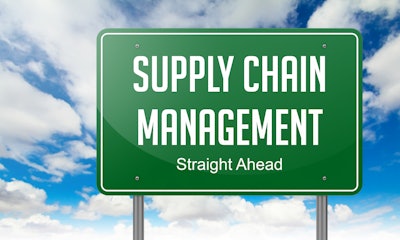
In the world of wholesale distribution and manufacturing, order processing is the lifeblood of operations. Yet for many organizations, this critical function remains tightly coupled to their enterprise resource planning (ERP) systems — systems that were designed for back-office control, not dynamic, omnichannel commerce.
As customer expectations evolve and operational complexity increases, a growing number of companies are questioning whether the ERP is still the best tool for the job. Here’s why order processing deserves fresh attention, where order management systems (OMS) fit into the picture, and how forward-thinking businesses are rearchitecting for flexibility, visibility, and speed.
The ERP-centric status quo
Most distributors and manufacturers run order processing through their ERP platforms. That’s not surprising: ERP systems are purpose-built to manage core functions like inventory, pricing, financials, and procurement — all tightly interwoven with order data.
In these traditional models, order capture flows directly through inside sales, EDI, or ecommerce into the ERP. The ERP then determines availability, applies pricing, triggers fulfillment, and manages invoicing.
This model works reasonably well for:
● Simple order flows (e.g., single-channel sales, single-warehouse fulfillment)
● High-volume, low-SKU environments
● Companies not facing pressure to diversify sales channels or fulfillment options
But as complexity grows — multiple channels, diverse fulfillment strategies, rising customer expectations — cracks begin to show.
Signs your ERP order processing might be holding you back
Organizations that rely solely on ERP for order processing often experience one or more of the following challenges:
1. Inflexible workflows
ERP workflows are often hardcoded and difficult to change. Adding a new fulfillment rule or enabling a ship-from-store model can require costly customization.
2. Fragmented order visibility
When orders come in from different systems (e-commerce, EDI, inside sales) and are routed through separate warehouses or vendors, visibility becomes fractured. Customer service reps struggle to answer basic questions like “Where’s my order?”
3. Manual interventions
Exception handling, split shipments, vendor dropships, and backorders often require offline workarounds — spreadsheets, emails, or manual flags in the ERP.
4. Slow time-to-market
Launching a new sales channel, promotional bundle, or fulfillment strategy takes months instead of days due to ERP development cycles.
What is an order management system?
An OMS is a purpose-built platform that sits between your sales channels and your fulfillment network. It acts as a central orchestration engine for order capture, inventory availability, sourcing logic, routing decisions, and customer communication.
Key capabilities of a modern OMS include:
● Real-time inventory visibility across locations
● Rule-based sourcing and fulfillment (e.g., ship from closest distribution center, dropship if out of stock)
● Order splitting and consolidation
● Centralized customer order view across channels
● Exception handling and backorder workflows
● Real-time order status updates and alerts
While ERPs manage data, OMS platforms manage decisions — routing, prioritizing, communicating — with speed and agility.
ERP vs. OMS: Not either or, but a strategic layering
A common misconception is that OMS platforms replace ERPs. In reality, the two systems play distinct but complementary roles.
Function | ERP | OMS |
| System of Record | Yes | No |
| Order Capture | Limited | Omnichannel |
| Fulfillment Routing | Basic | Advanced logic |
| Inventory Availability | Static | Real-time, virtual pools |
| Order Visibility | Internal | Customer-facing |
| Workflow Flexibility | Low | High |
In mature digital architectures, the ERP handles core financial and operational data, while the OMS becomes the execution layer that enables speed, responsiveness, and customer satisfaction.
When to consider adding an OMS
An OMS is not a one-size-fits-all investment. It becomes increasingly valuable as certain business conditions emerge:
Multiple sales channels
If you're taking orders via ecommerce, inside sales, EDI, marketplaces, or punchout catalogs, an OMS can unify and manage those inputs more effectively than an ERP alone.
Complex fulfillment networks
Companies with multiple warehouses, third-party logistics (3PLs), vendor drop shipping, or in-store pickup scenarios benefit from OMS-based sourcing logic.
Desire for customer-centric experience
Real-time updates, proactive notifications, and order self-service require more agile order management than most ERPs provide.
Growth-driven change
If your company is scaling fast, launching new brands, or entering new markets, an OMS can help absorb change without destabilizing your ERP core.
What implementation looks like
Implementing an OMS doesn't mean ripping and replacing your ERP. It’s typically layered in as middleware, integrated via APIs or middleware platforms.
Typical architecture:
● Sales channels (e-commerce, EDI, CRM) → OMS → ERP + WMS
● OMS handles capture, validation, sourcing, and orchestration
● ERP handles inventory, pricing, invoicing, and financials
● WMS handles physical pick, pack, and ship
This modular approach gives teams the freedom to evolve digital capabilities while preserving the stability of backend systems.
Case study examples
● An industrial distributor with six regional DCs and a growing e-commerce channel used OMS to dynamically route online orders to the optimal fulfillment center, cutting delivery time by 20% and reducing shipping costs.
● A plumbing manufacturer introduced an OMS to support both B2B and D2C orders from a single system. The OMS handled complex routing rules (e.g., ship B2C from 3PL, B2B from internal DC), while syncing seamlessly with the ERP for invoicing and inventory.
These examples highlight how OMS adds agility without undermining the ERP’s core responsibilities.
Final thoughts
Order processing is no longer just a back-office function — it’s a customer-facing differentiator. For manufacturers and distributors navigating increasingly complex fulfillment landscapes and rising service expectations, modernizing order management is critical.
An OMS isn’t for everyone, but for businesses feeling the strain of ERP-only order workflows, it represents a powerful lever for flexibility, visibility, and future readiness.
The key takeaway? Your ERP keeps your business running. Your OMS should help it move forward.
















